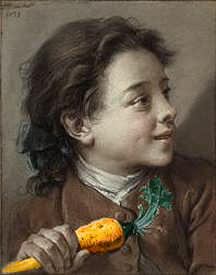5.27.2008
The last time I took my students to the American Museum of the Moving Image when I was teaching in New York, I got to be a docent. Apparently, we had come a little early and someone had called in a little sick, and through a variety of circumstances for which the museum was totally not responsible, they didn't have enough docents to accommodate our group. Well, I'd been through the museum every year for the last 6 with my students, and made frequent trips their on my own. Kim actually lived in an apartment less than two blocks away, and that museum was perhaps my favorite reason for living in that neighborhood (although the Greek food was a close second).
So when they asked me if I'd mind acting as a docent, I was more than happy to oblige. In fact, that's understating it a bit- it was a bit like asking me, at 12 years old, if I'd like to give a tour of the Death Star.
Imagine teaching one of your favorite lessons in your favorite subject with the best physical examples, interactive experiences, and supplemental film and audio content all at your fingertips. Yeah. It was that good.  I'm reflecting on that day now, because I remember feeling pretty good about my knowledge of pre-cinema motion devices (like the kinetoscope, or the phenakistiscope, and other optical toys). Then came across the home page of the Pictoral Media History website, and was humbled by the amount of information on this page regarding these devices I'd never even heard of. I mean, anorthoscope??? What's an anorthoscope? Be sure to pair this page with the great resources of the Museum of the Moving Image's own great online resources if you're teaching about the pre-history of motion pictures.
I'm reflecting on that day now, because I remember feeling pretty good about my knowledge of pre-cinema motion devices (like the kinetoscope, or the phenakistiscope, and other optical toys). Then came across the home page of the Pictoral Media History website, and was humbled by the amount of information on this page regarding these devices I'd never even heard of. I mean, anorthoscope??? What's an anorthoscope? Be sure to pair this page with the great resources of the Museum of the Moving Image's own great online resources if you're teaching about the pre-history of motion pictures.
Tags: Animation, Art History, film














